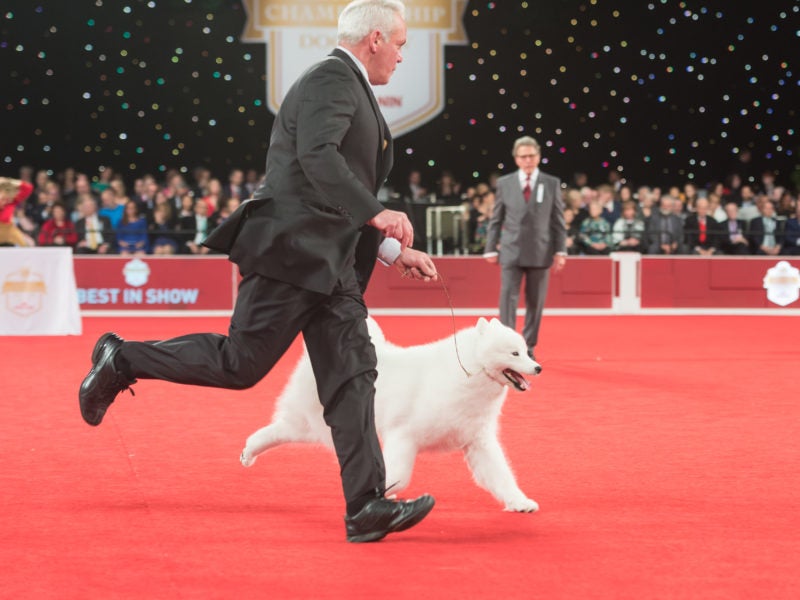
Sit down and stay awhile.
That porch-rocker philosophy used to be prevalent at dog shows, which for the first half of the 20th Century were all-day affairs for exhibitors. Back then, shows were benched, meaning that dogs were required to stay on elevated wooden benches so they could be viewed by the public. Captive audiences themselves, owners and handlers wiled away the time by watching other breeds, visiting with friends and competitors, and generally adding to their dog knowledge, even if only by osmosis.
Today, thanks to our changing lifestyles, only a handful of shows are still benched, the most famous of which is Westminster. Another significant change is the increased presence of owner-handlers: In stark contrast to the professional handlers who had monopolized the ribbons for decades, these amateurs likely have just one dog to show – their own – and they aren’t making a living doing it. As a result, a “show and go” philosophy began to prevail: If their dog doesn’t advance in the competition, many exhibitors simply pack up and head home, sometimes even before Best of Breed is completed, much less the Groups or Best in Show.
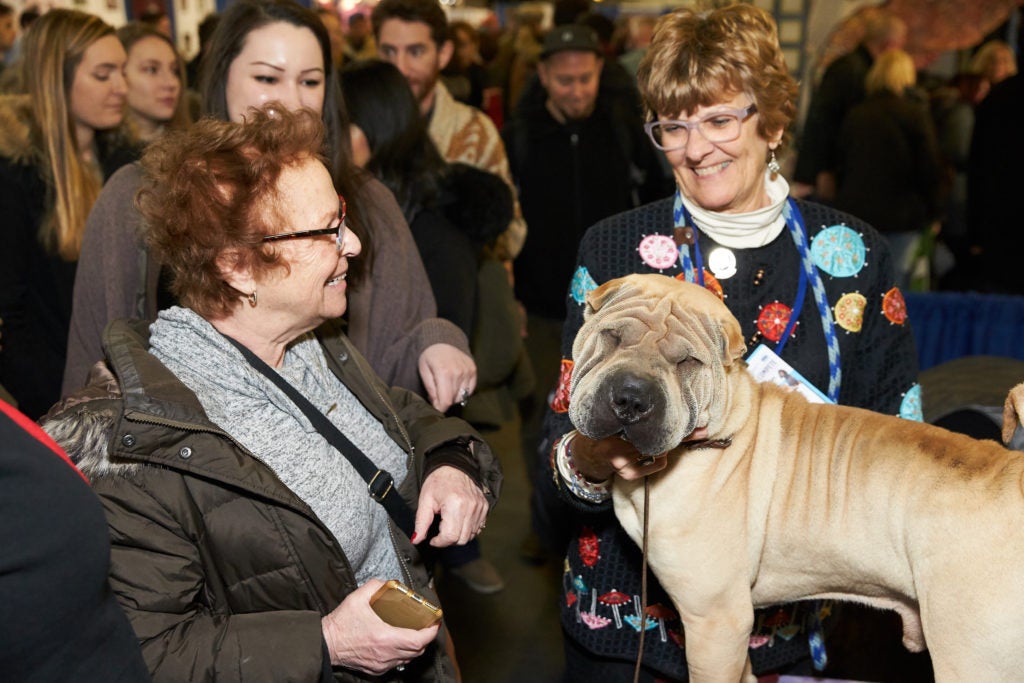
But as much as many things have changed at dog shows, others have stayed very much the same. Chief among them is motivation: At their very core, dog-show exhibitors are a competitive bunch. After all, no one goes to a dog show to lose.
With that in mind, here are some tips for winning at a dog show. It should be a given that you need to have a reasonably typey, sound, well-conditioned, and appropriately groomed dog at the end of your lead. Our focus, instead, is on you – specifically, from the neck up. Your mental preparation and attitude are a fundamental part of your winning philosophy.
Channeling Carnegie Hall
You remember the old joke about the lost tourist in Manhattan – “How do I get to Carnegie Hall?” – and the decidedly directionless answer he gets: “Practice, practice, practice.”
While some people are just naturally poised and coordinated, it still takes time to learn all the rules of the show ring, and where and how to move your dog in order to follow the judge’s directives. From handling classes to match shows, seek out any opportunity to work on your ringcraft.
The reason for this is simple: While judges may have different ring procedures, ultimately there isn’t much variety in the way exhibitors present their dogs. Once you have the muscle memory – in other words, once you have done the routine so often it becomes a reflex – that frees up your brain to contemplate more pressing questions in the moment: Who is my main competition in this class? What does this judge seem to be looking for? Where is the flattest portion of this lumpy, bumpy outdoor ring, so I can stack my dog to best advantage?
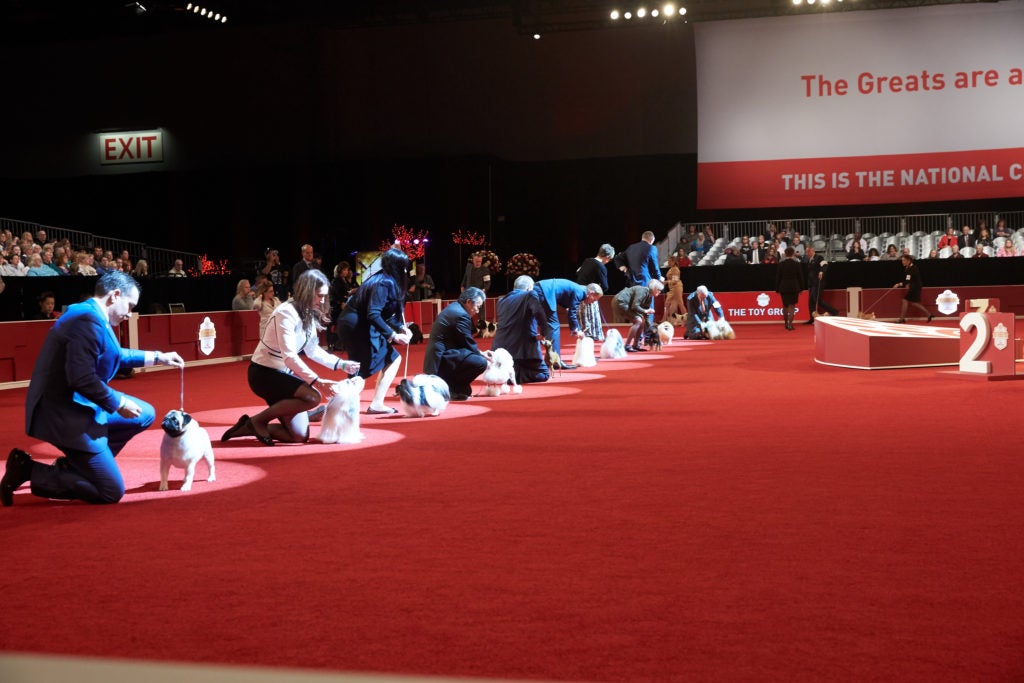
Ready for my Close-up
Enlist a friend to come with you to the dog show and video you in the ring. Playing it back will give you a very clear picture of your strengths and weaknesses, and will likely reveal some quirks that you never realized existed. (“I do that? I make my dog look like that?”)
If your ego can handle it, solicit constructive criticism from friends after you exit the ring – even if you’ve won. When they answer, “You did fine,” press them for even the tiniest area of improvement: “Yes, but no one’s perfect – what could I have done better, so I improve on it the next time?”
Before you try this approach, however, be sure of two things: First, that the person you are asking is experienced and objective enough to give you a worthwhile answer. And second: Be sure you are willing to accept the solicited criticism graciously and with an open mind.
Psyched Out
Many exhibitors defeat themselves before they step in the ring. If you look hard enough, you’ll always find excuses about why you can’t win: The number-one dog in the country is here, that handler knows the judge, my dog’s just not on his game. Instead, focus on your dog’s positive points – after all, even the “great ones” have faults.
Don’t be intimidated by more experienced competitors or professional handlers: Many judges delight at the idea of being the first one to find that next superstar, comparing the process of judging to a kind of treasure hunt. So don’t make like Jack Sparrow and bury your treasure: Show your dog proudly and competently, all the better to be found.
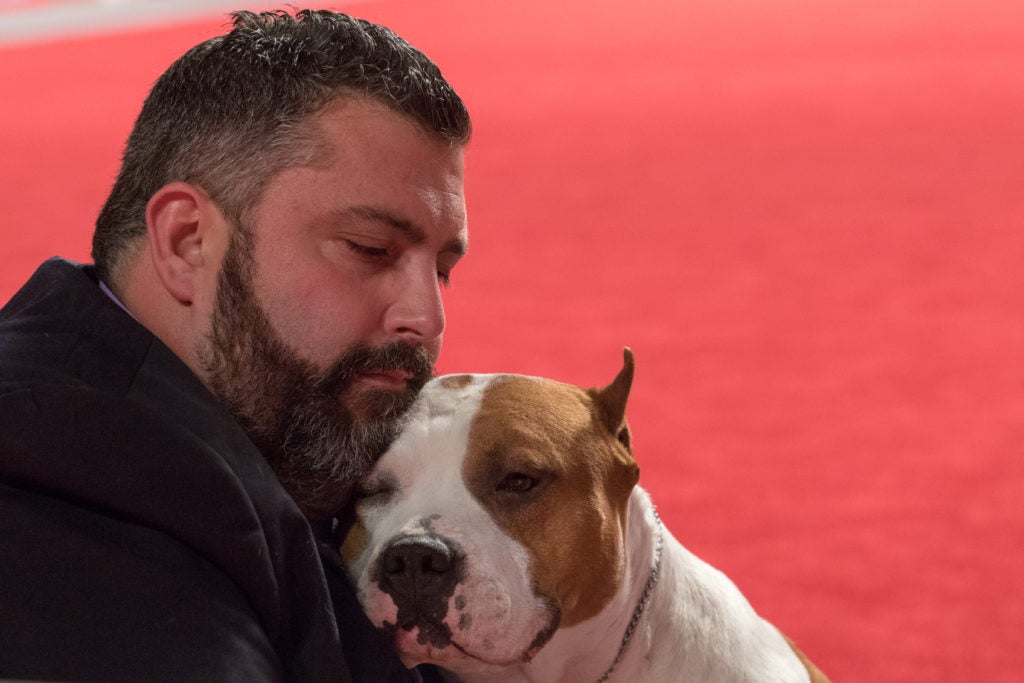
Role Reversal
Many exhibitors are quick to criticize judges, but often their dissatisfaction is based on false assumptions. To see what it’s like to be the owner of that omniscient pointing finger, volunteer to judge at an unofficial event like a match show or sweepstakes. You might just be surprised at how difficult it is to simultaneously run a ring, attend to the paperwork, and keep all the dogs straight in your head.
If you undertake that role reversal, you will invariably notice how an exhibitor’s presentation affects your ability to see a dog’s quality. If the dog is untrained, the exhibitor unsure, and the performance uneven, it’s understandable why some judges might point instead to the more competently presented competition. Make it easy for the judge to choose you by being prepared.
And remember that your attitude is an important part of a winning outcome. Projecting quiet confidence, competence and politeness can only help your chances. And being in tune with your dog – treating him as a valued partner and not an object to be manipulated and controlled – goes a long way, too. All judges understand that dogs are just that – dogs – and not little robots in fursuits. They will occasionally misbehave. How you handle that – hopefully with a sense of humor and good grace – also communicates a great deal to a judge.
Defining Success
In the end, winning isn’t about how many trophies are on your shelf, or how many ribbons are on your wall. After all, from a strictly mathematical perspective, dog shows create more losers than winners, and more people will leave the ring disappointed than not.
That’s why it’s important not to base your sense of achievement on whether or not you leave with a brightly color scrap of silk. Remember that every dog and handler in that ring has a different experience level. Some are totally green newbies, others are seasoned handlers. Some dogs are still young and puppyish, and haven’t fully matured; others may be physically ready, but are not yet accustomed to the hubbub of a dog show at full throttle.
The cure for most of these maladies is tincture of time: Practice, exposure and your own evolution as a handler will eventually dislodge you from a losing streak.
In the meantime, revise your expectations to match the level where you and your dog are. Perhaps you’ll decide that victory today means just having your dog stand steadily for the judge’s exam, or going around the ring with his tail wagging instead of tucked because he’s figured out that this dog-show game is actually fun. Those accomplishments are just as valuable as any ribbon, because they enable you to progress in this complex but deeply satisfying sport.
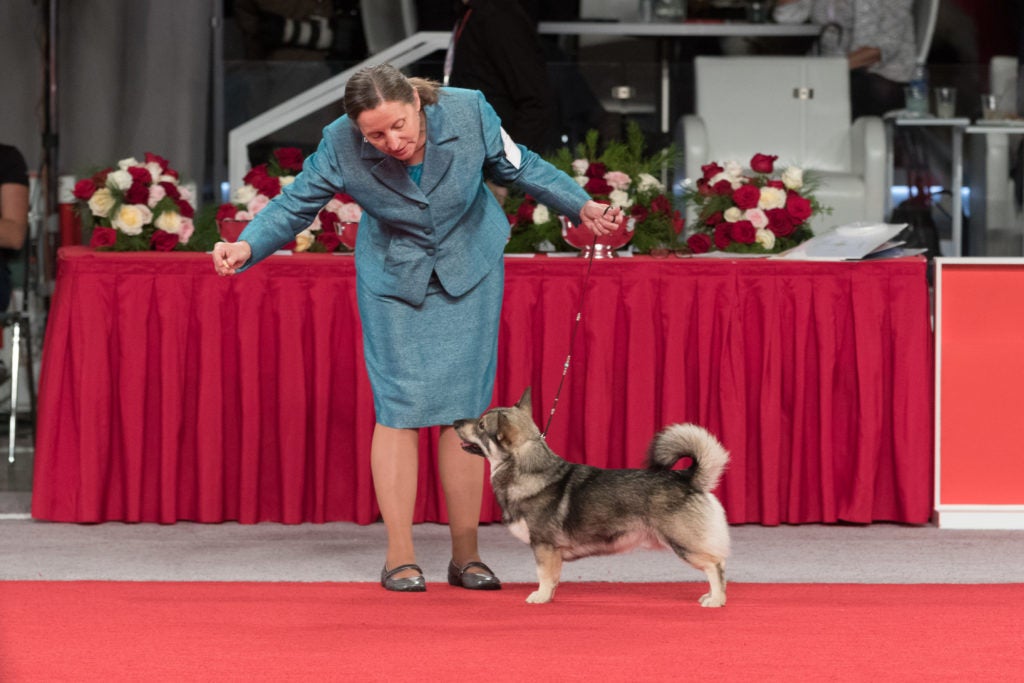
Embrace the Gray
Dog shows by definition are subjective: The results depend on the opinion of the judge on the day. And just as exhibitors and their dogs are on a unique trajectory, so are judges. The breed they originated with, the amount of experience they have judging, the amount of exposure they have to your breed, the priorities they carry into the ring, which can change as they evolve as judges … all are factors in their decision making.
Seasoned exhibitors learn what a judge is looking for, and enter dogs accordingly. If they know a judge will forgive some minor structural flaws if the dog has an exquisite head, they will enter a pretty face. If they know the judge values correct, effortless movement, they will bring their best trotter. The more you pay attention – and the more you make like those bench-show exhibitors of another era, and linger and listen to those with more experience – the more quickly you will master the psychology of winning in the show ring.
New Vistas
As with any sport, dog showing isn’t for everyone. After a few times in the ring, you might find you really don’t like being the center of attention. That’s perfectly fine: If the process of competing with your dog feels like a root canal instead of an invigorating challenge, then just accept it, hire a professional handler or friend to show your dog, and enjoy the process from outside the ring. Life is too short to do something you don’t love.
And remember that conformation is only one way to enjoy and build your bond with your dog. There are so many other canine sports and activities, from trick training to scent work, that you can explore with your dog. Some, like obedience and agility, require a lot of training and rapport between handler and dog. Others – such as barn hunt and the coursing aptitude test, or CAT – rely mainly on a dog’s hard-wired instinct: Just let him go, sit back, and enjoy.
Bottom line: There are plenty of different avenues to being at the top of the game with your dog. The key is choosing the right game for the both of you, accepting that there is a learning curve, and deciding to enjoy every literal step of the way.

